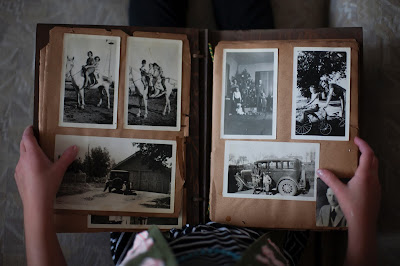The 'Mandela Effect': Your Mind Is Playing Tricks On You
Have you ever been convinced that something is a particular
way only to discover you’ve remembered it all wrong? If so, it sounds like
you’ve experienced the phenomenon known as the Mandela Effect.
This strange form of collective misremembering of common events or details first emerged in 2010, when countless people on the internet falsely remembered Nelson Mandela was dead. It was widely believed he had died in prison back in the 1980's. Obviously, not true. In reality, Mandela was actually freed in 1990 and passed away in 2013 - despite some people's claims they remember seeing clips on his funeral on TV.
Paranormal consultant Fiona Broome coined the term "Mandela Effect" to explain this collective misremembering, and then other examples began popping up all over the internet. For instance, it was wrongly recalled that C-3PO from Star Wars was gold, when actually one of his legs is silver. Likewise, people often wrongly believe that the Queen in Snow White says, "Mirror, mirror on the wall." The correct phrase is "Magic mirror on the wall." Quotes are a big one for this effect.
Broome explains the Mandela Effect via pseudoscientific theories.
She claims that differences arise from movement between parallel realities (the
multiverse). This is based on the theory that within each universe alternative
versions of events and objects exist.
 |
| Star Trek Holodeck - www.memory-alpha.wikia.com |
Broome also draws comparisons between existence and the
holodeck of the USS Enterprise from Star Trek. The holodeck was a virtual
reality system, which created recreational experiences. By her explanation,
memory errors are software glitches. This is explained as being similar to the
film The Matrix.
Other theories propose that the Mandela Effect evidences
changes in history caused by time travelers. Then there are the claims that
distortions result from spiritual attacks linked to Satan, black magic or
witchcraft. But although appealing to many, these theories are not
scientifically testable.
So Where's The Science?
Psychologists explain the Mandela Effect via memory and social effects - particularly false memory. This involves mistakenly recalling events or experiences that have not occurred, or distortion of existing memories. The unconscious manufacture of fabricated or misinterpreted memories is called confabulation. In everyday life confabulation is relatively common.
False memories occur in a number of ways. For instance, the
Deese-Roediger and McDermott paradigm demonstrates how learning a list of words
that contain closely related items – such as “bed” and “pillow” – produces false
recognition of related, but non presented words – such as “sleep”.
Memory inaccuracy can also arise from what’s known as
“source monitoring errors”. These are instances where people fail to
distinguish between real and imagined even. US professor of psychology, Jim
Coan, demonstrated how easily this can happen using the “Lost in the Mall”
procedure.
This saw Coan give his family members short narratives
describing childhood events. One, about his brother getting lost in a shopping
mall, was invented. Not only did Coan’s brother believe the event occurred, he
also added additional detail. When cognitive psychologist and expert on human
memory, Elizabeth Loftus, applied the technique to larger samples, 25% of
participants failed to recognise the event was false.
Incorrect Recall
When it comes to the Mandela Effect, many examples are
attributable to so called “schema driven errors”. Schemas are organised
“packets” of knowledge that direct memory. In this way, schemas facilitate
understanding of material, but can produce distortion.
Frederic Bartlett outlined this process in his 1932 book
Remembering. Barlett read the Canadian Indian folktale “War of the Ghosts” to
participants. He found that listeners omitted unfamiliar details and
transformed information to make it more understandable.
This process is called “effort after meaning” and occurs in
real world situations too. For instance, research has previously shown how when
participants’ recall the contents of a psychologist’s office they tend to
remember the consistent items such as bookshelves, and omit the inconsistent
items – like a picnic basket.
Schema theory explains why previous research shows that when
the majority of participants are asked to draw a clock face from memory, they
mistakenly draw IV rather than IIII. Clocks often use IIII because it is more
attractive.
Other examples of the Mandela Effect are the mistaken belief
that Uncle Pennybags (Monopoly man) wears a monocle, and that the product title
“KitKat” contains a hyphen (“Kit-Kat”). But this is simply explained by
over-generalization of spelling knowledge.
Back To Reality
Frequently reported errors can then become part of
collective reality. And the internet can reinforce this process by circulating
false information. For example, simulations of the 1997 Princess Diana car crash
are regularly mistaken for real footage.
In this way then, the majority of Mandela Effects are
attributable to memory errors and social misinformation. The fact that a lot of
the inaccuracies are trivial, suggests they result from selective attention or
faulty inference.
This is not to say that the Mandela Effect is not explicable
in terms of the multiverse. Indeed, the notion of parallel universes is
consistent with the work of quantum physicists. But until the existence of
alternative realities is established, psychological theories appear much more
plausible.
Like I said the other day about conspiracy theories on the internet; if you see something being professed in a headline, just do a little more research on the subject before taking it for solid truth. Check other websites, read different news outlets, find the facts. There's too much misinformation being shared on the internet, and too many people believing them without a second thought.
Rise above the masses. The fresh air is nice.
See you tomorrow.
Buh-bye.




Comments
Post a Comment